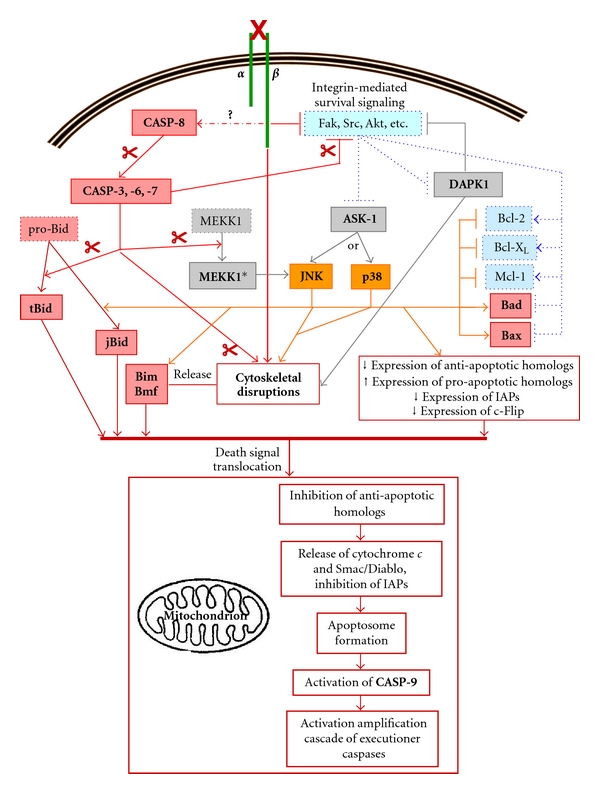Figure 3.

Common pathway of anoikis induction. The loss of integrin-mediated adhesion results in the faltering of survival signals (Fak, Src, Akt, etc.), as well as in the activation of the initiator caspase CASP-8 through a mechanism which remains unclear (“?”). This in turn leads to a “low-intensity” activation of executioner caspases. On the one hand, these caspases will activate the pro-apoptotic homolog Bid and further inactivate pro-survival kinases associated with integrin signaling, among other things. On the other hand, the resulting cytoskeletal disruptions from the loss of integrin binding, further exacerbated by excutioner caspases, will release Bim and Bmf. Moreover, SAPKs (JNK and/or p38 isoforms) and DAPK1 are activated, presumably furthering cytoskeletal disruption, among other apoptotic functions. Overall, these events contribute to the translocation of the death signal to mitochondria, resulting ultimately in the formation of the apoptosome (see Figure 1) and thus rendering the process irreversible. Note that only the general outlines are shown herein, for the sake of concision. MEKK1*, constitutive active MEKK1 following caspase-cleavage; scissors: caspase-mediated cleavage.
